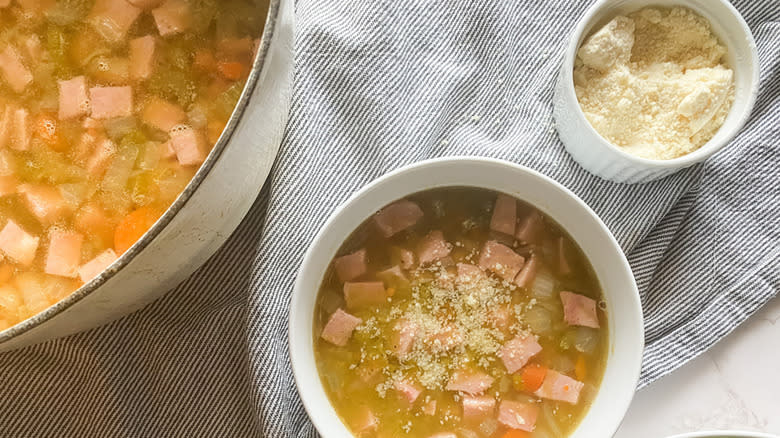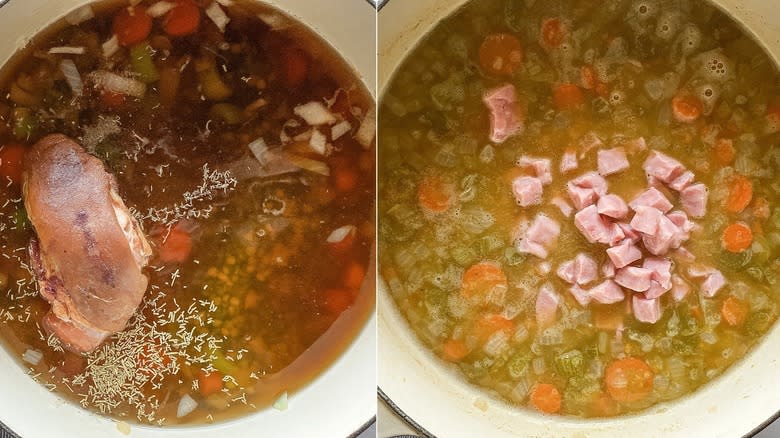Use 2 Types Of Ham For Richer Split Pea Soup

Many people agree that split pea soup needs a little bit of ham somewhere in the mix. Depending on the chef, that little bit could turn into a lot, and nobody's judging. There are, however, some pretty strong opinions about what kind of ham best serves the soup, with favorites including country ham, Black Forest, Smithfield, maple, picnic, Canadian, and a slew of regional specialties. Then there are distinctions such as smoked, cured, uncured, shank, and more. That's a lot of nuanced flavors that could be influencing your split pea soup, but in reality, there are just two things that really matter, and they can come from any variety of ham you choose.
The thing you're looking for is the cut of ham, and the secret is to use more than one of them. When the soup is evolving in your pot, you need a ham hock in there with the peas, broth, and veggies. This is crucial for the elements it brings to the overall flavor. In sharing her split pea soup recipe, Tasting Table recipe developer Kristen Carli explains that the ham hock adds smoky, hearty, and rich flavor to the soup.
As delicious as that sounds, it's not quite enough for the perfect pot of soup. A second kind of ham joins the split-pea party at the very end of the cooking process.
Read more: 20 Popular Canned Soups, Ranked Worst To Best
Two Hams In Split-Pea Harmony

After the ham hock has made its mark on your soup, filling your kitchen with comfort-food aromas, the second kind of ham you need is ordinary cubed ham, which often comes from boneless hams. These bite-sized chunks of ham get added toward the end, when the split pea soup is mostly complete. Carli notes in her Tasting Table recipe that "the cubed ham in the final dish provides some protein and substance to this soup."
Since ham comes already cooked from the supermarket, and is often available pre-cut into cubes, you need to add it only in the last 10 minutes of the soup-making process. This is essentially just to heat it up to the same temperature as the soup. Now, you have a tasty blend of split peas, fresh aromatic herbs such as rosemary and thyme, the smokey rich flavor of ham hocks, and some hearty bites of meat to fill hungry bellies.
Sprinkle some parmesan cheese on top if desired, and toss in a few croutons for a bit of crunch. Serve it with crispy garlic bread or a batch of old-fashioned skillet cornbread, the ultimate companion for warm split pea soup.
Read the original article on Tasting Table

 Yahoo Sports
Yahoo Sports 